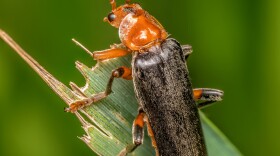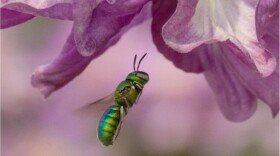
Bug Bytes
As described by Edward O. Wilson — perhaps the best known American biologist, researcher, naturalist and author — invertebrates are "The Little Things That Run the World." And indeed they do, in so many ways. In terms of numbers — while most invertebrates are pretty small, the sheer number of them is astounding. Together, they have more biomass than any other animal on earth.
Learn more about the fascinating creatures that run the world, with Bug Bytes from the Missoula Butterfly House and Insectarium.
-
But be honest …how many of you thought of North Dakota, Montana, or southern Canada? Then you’ve probably never heard of the Northern Scorpion.
-
If any beetle was said to have an “explosive personality”, it would have to be the bombardier beetle.
-
As long as the weather is favorable, you can walk out your door and find some amazing insects to observe almost anytime.
-
There are over 400,000 known species of beetles in the world. So when you’re considered one of the largest, that’s really saying something.
-
If you’ve ever been along a river, and fortunate to catch the peak of the Giant Salmonfly hatch, it’s an experience you’ll never forget.
-
But their speed, agility, and tendency for in-flight dining come with some worrisome risks. But it’s nothing to lose their heads over …or is it?
-
A male Orchid Bee can’t rely on his good looks when looking for a mate. For success, he depends on his own brand of home-made perfume.
-
Introducing, the Bullet Ant, so named because its sting is supposedly as painful as being shot. It’s considered to have the most painful of all insect stings.
-
In addition to their impressive size, Atlas Moths are known for their extraordinary wing markings, especially at their wingtips. Incredibly, the patterns mimic the profile of a cobra’s head, a way to fool predators into thinking they are anything but an easy meal.
-
Using their necks like a long lever, males will battle other males over a female. But rather than simply engaging in neck-to-neck combat, males will perform elaborate dances, involving the swaying of their necks. The female acts like a referee, closely observing the fight. If she approves of the winner, she’ll allow him to mate.










